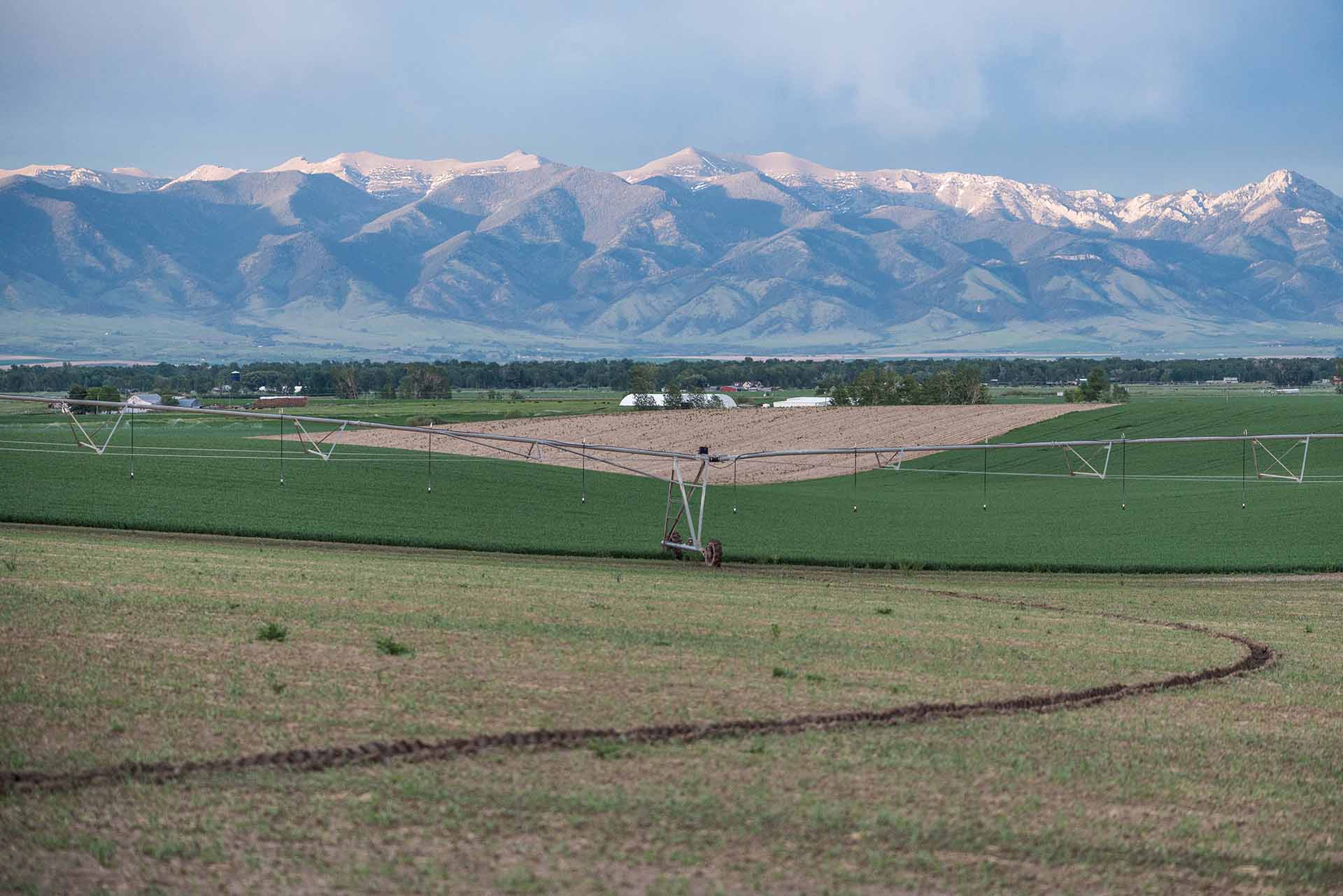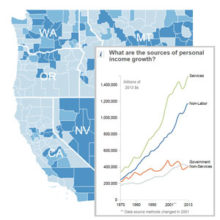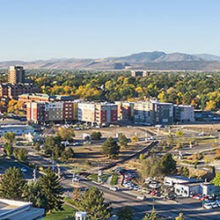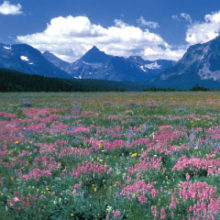- Overall, Gallatin County’s economy is performing well. From 2001-2016, Gallatin County’s employment increased by 55 percent while total real personal income increased by 111 percent. Compared to Montana, Gallatin County’s real per capita income grew 12 percent faster.
- As Gallatin County’s economy diversifies, all sectors of the economy are growing, except farm.
- Since 1990, Gallatin County has lost more open space than any other county in Montana.
Gallatin County Is Growing Faster Than Montana
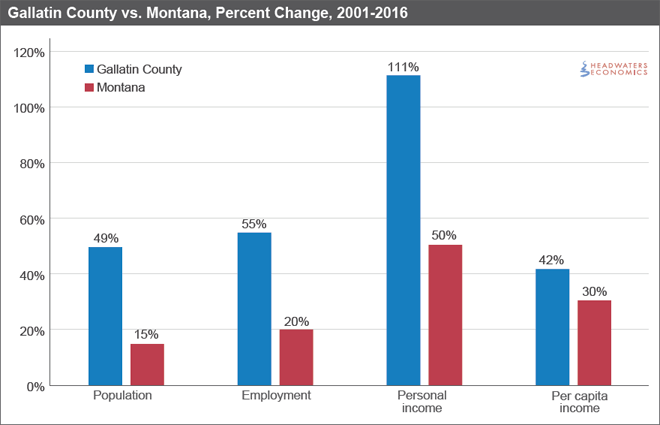
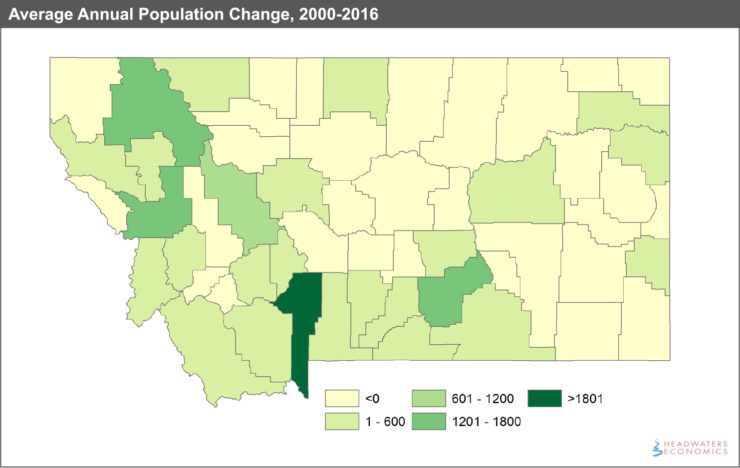

Gallatin County’s high quality of life and natural amenities attract entrepreneurs, workers, retirees, and tourists. While the economy diversifies, the rapid pace of growth threatens the open space and natural amenities that draw and keep people here.
Gallatin County’s Population Has Doubled Since 1990
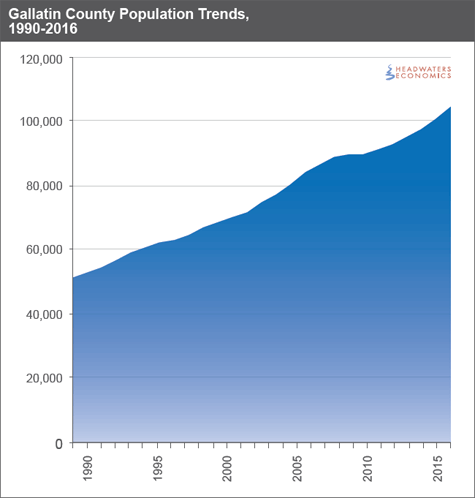
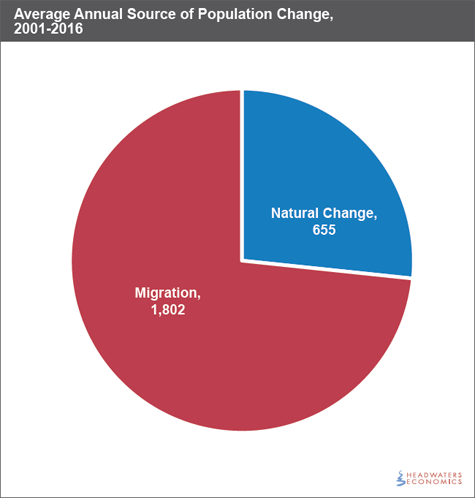
Gallatin County added more than 50,000 residents since 1990. The population in 2016 was 104,502. Nearly three-quarters of the population growth is from the arrival of new residents in the last 15 years.
All Sectors of the Economy Are Growing Except Farm

Gallatin County Created More Than One-Quarter of All New Jobs

Gallatin County Has Many Factors That Indicate Likely Future Growth
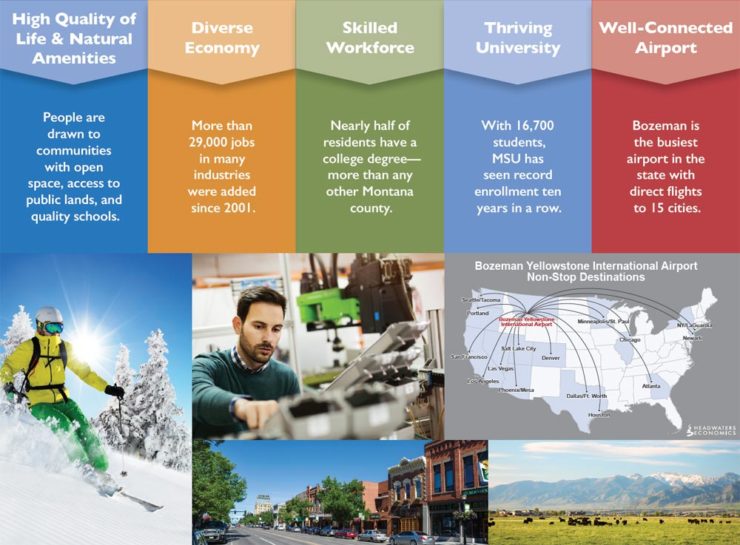
Growth Threatens Open Space
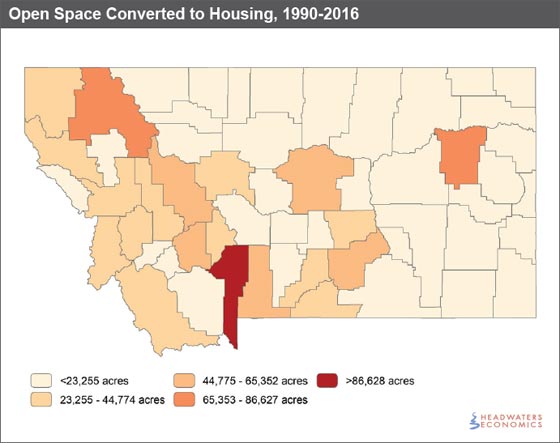
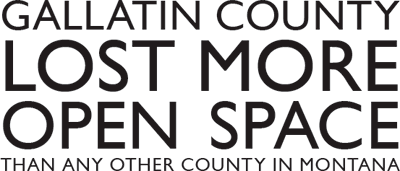

Open Space: Key to Gallatin’s Quality of Life
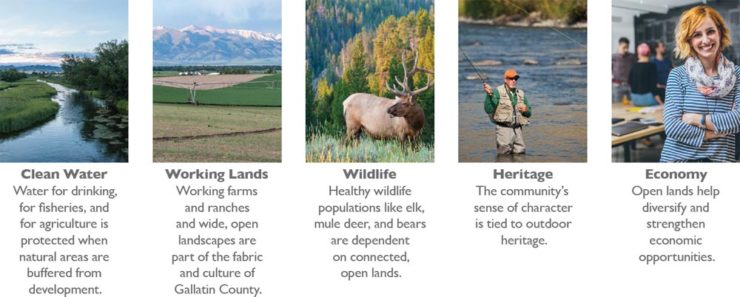
References
Population and demographic statistics from U.S. Department of Commerce. 2017. Census Bureau, American Community Survey Office, Washington, D.C.
Job and economic statistics from U.S. Department of Commerce. 2017. Bureau of Economic Analysis, Regional Economic Accounts, Washington, D.C.
Airport flight information from: https://bozemanairport.com/
Open space data from: https://archive.headwaterseconomics.org/economic-development/local-studies/montana-home-construction/
MSU enrollment data from: http://montana.edu/opa/facts/headhist.html
